1. Siddi Tribal Community: A Journey of Resilience and Progress – Indian Society
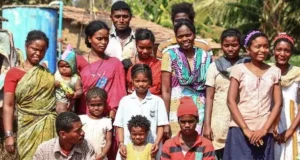
Why in News?
The President of India recently applauded the Siddi tribal community for achieving a literacy rate exceeding 72%, marking a significant milestone in their educational upliftment and social development.
This achievement is notable as the Siddi community is listed as a Particularly Vulnerable Tribal Group (PVTG) and has historically faced socio-economic marginalisation.
Who are the Siddis?
| Aspect | Details |
|---|---|
| Ethnic Roots | African origin – descended from the Bantu people of sub-Saharan Africa |
| Migration to India | Arrived as early as the 7th century with Arab traders; many brought later by the Portuguese in the 16th century as slaves and laborers |
| Classification | Declared Scheduled Tribe on January 8, 2003 |
| Status | Recognized as a Particularly Vulnerable Tribal Group (PVTG) in some states |
Geographical Distribution
Primarily found in:
Gujarat
Maharashtra
Karnataka
Telangana
Socio-Cultural Features
| Feature | Description |
|---|---|
| Language | Speak Konkani, Marathi, Urdu, and local dialects depending on region |
| Occupation | Traditionally dependent on agriculture, forest produce, and manual labor |
| Culture | Known for vibrant folk music and dance, especially:
|
Challenges Faced by the Siddi Community
Social exclusion due to their distinct African features
Limited access to quality education and healthcare
Poor economic integration and dependence on informal sectors
Loss of cultural identity due to marginalisation and assimilation pressures
Significance of Literacy Milestone
Literacy rate of 72% shows significant progress in education and awareness
Reflects the impact of government schemes, NGO efforts, and community mobilization
Lays the groundwork for:
Greater economic opportunities
Improved political participation
Social integration into mainstream society
Government Interventions
ST and PVTG Welfare Schemes – Targeted educational and economic programs
Eklavya Model Residential Schools (EMRS) – Access to quality education
Skill development programs – For alternative livelihood options
Special Cultural Grants – To preserve and promote unique cultural heritage
Exam Connect – Possible Questions
Prelims
1. The Siddi tribal community in India is primarily descended from:
A. Mongolian tribes
B. Bantu-speaking people of Africa
C. Dravidian tribes of South India
D. Central Asian nomadic groups
Answer: B. Bantu-speaking people of Africa
2. Consider the following statements regarding the Siddi community:
1.They are classified as a Particularly Vulnerable Tribal Group (PVTG) in some Indian states.
2.Their traditional dance forms include Dhamal and Rasda.
3.They migrated to India during the Mughal period only.
Which of the statements given above is/are correct?
A. 1 and 2 only
B. 2 and 3 only
C. 1 and 3 only
D. 1, 2 and 3
Answer: A. 1 and 2 only
Mains
1. Discuss the historical origin and cultural identity of the Siddi tribal community in India. How has their socio-economic condition evolved in recent decades? (150 words)
2.The inclusion and development of marginalized communities like the Siddis are essential for inclusive growth in India. Analyze the challenges faced by the Siddi community and suggest measures to promote their integration into the mainstream. (250 words)
2. Pradhan Mantri Dhan-Dhaanya Krishi Yojana (PMDDKY) – Economy
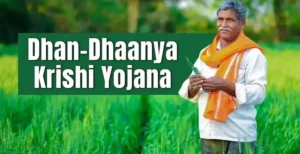
Why in News?
The Prime Minister of India recently launched two major agricultural initiatives, including the Pradhan Mantri Dhan-Dhaanya Krishi Yojana (PMDDKY), with a combined budget of ₹35,440 crore.
The scheme aims to revitalize the agricultural sector, with a focus on supporting small and marginal farmers.
Overview of PMDDKY
| Feature | Details |
|---|---|
| Launched By | Government of India |
| Objective | Holistic support for farmers through financial aid, infrastructure, technology, and sustainability |
| Coverage | Targets 100 underperforming districts struggling with poor agricultural productivity |
| Integration | Consolidates 36 existing agricultural schemes for better efficiency and delivery |
Core Objectives
Increase Crop Yields by 20–30%
High-yielding seeds
Mechanization and access to modern tools
Reduce Monsoon Dependence
Advanced and affordable irrigation technologies
Build Storage Infrastructure
Reduce post-harvest losses to under 5%
Cold chains and warehousing solutions
Double Farmer Incomes by 2030
Direct market access
Financial incentives and diversification
Promote Sustainable Agriculture
Environment-friendly practices
Soil and water conservation
Key Benefits to Farmers
| Benefit | Description |
|---|---|
| Mechanized Farming | Access to affordable tools and equipment for improved efficiency |
| High-Value Crops | Encouragement to diversify into horticulture, pulses, oilseeds, and organic farming |
| Financial Assistance | Subsidies, Kisan Credit Card (KCC)-linked loans, and insurance |
| Storage & Logistics | Infrastructure to reduce wastage and ensure better price realization |
| Skill Development | Farmer training, workshops, and international exposure programs |
Strategic Focus Areas
Small & Marginal Farmers: Tailored schemes to ensure inclusion and access
Backward Districts: Bridging regional imbalances in agricultural development
Technology Infusion: Drones, precision agriculture, remote sensing
Market Linkages: Integration with e-NAM and FPOs (Farmer Producer Organisations)
Expected Outcomes
Sustainable and climate-resilient agriculture
Reduced farmer distress and rural unemployment
Strengthened agriculture value chains
Contribution to achieving Doubling of Farmers’ Income by 2030
Exam Connect – Possible Questions
Prelims
1. The recently launched Pradhan Mantri Dhan-Dhaanya Krishi Yojana (PMDDKY) aims to:
A. Promote organic farming across India
B. Provide direct income support to all farmers
C. Consolidate agricultural support schemes for targeted districts
D. Replace MSP-based procurement with direct market access
Answer: C. Consolidate agricultural support schemes for targeted districts
2. Which of the following is not a feature of PMDDKY?
A. Promotion of monoculture in dryland regions
B. Irrigation system upgrades to reduce monsoon dependency
C. Infrastructure to reduce post-harvest losses
D. Training and skill development for farmers
Answer: A. Promotion of monoculture in dryland regions
(PMDDKY encourages diversification, not monoculture.)
Mains
1. Discuss the objectives and key features of the Pradhan Mantri Dhan-Dhaanya Krishi Yojana (PMDDKY). How does this scheme aim to address the structural challenges in Indian agriculture? (150 words)
2.”Agricultural transformation in India requires more than financial support; it demands systemic change.” Critically evaluate this statement in the context of PMDDKY and its approach to sustainable, inclusive, and technology-driven agricultural growth. (250 words)
3. Research Development and Innovation (RDI) Scheme – Economy
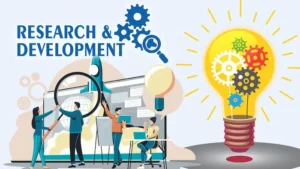
Why in News?
The Executive Council of the Anusandhan National Research Foundation (NRF) has approved the creation of a Special Purpose Fund (SPF) to support the Research Development and Innovation (RDI) Scheme, a major initiative to strengthen India’s innovation ecosystem and promote high-tech, research-driven growth.
Objective of the RDI Scheme
To boost investment in research, innovation, and deep-tech startups by:
Providing long-term financing/refinancing at low or nil interest rates
Stimulating private sector investment in sunrise sectors
Supporting high Technology Readiness Level (TRL) projects
Reducing India’s reliance on imported technology through indigenous R&D
Key Features
| Feature | Description |
|---|---|
| Budget | ₹1 lakh crore |
| Implementation Body | Anusandhan National Research Foundation (NRF) |
| Nodal Department | Department of Science & Technology (DST) |
| Fund Structure | SPF will operate through second-level fund managers |
| Target Beneficiaries | Startups, deep-tech companies, and R&D-intensive sectors |
| Support Mechanisms | Long-term loans, refinancing, and equity infusion options |
| Focus Areas | Deep-tech, clean tech, semiconductors, biotech, AI, quantum computing, etc. |
Special Purpose Fund (SPF)
Custodian: Housed within the Anusandhan NRF
Function: Will not invest directly but channel funds via:
Alternative Investment Funds (AIFs)
Development Finance Institutions (DFIs)
Non-Banking Finance Companies (NBFCs)
Technology Readiness Levels (TRLs)
TRL is a measure of how close a technology is to being market-ready.
Higher TRL projects involve prototype validation, testing, and commercialization, which require high-capital investment — a major focus of the RDI Scheme.
Deep-Tech Fund of Funds
A dedicated “Deep-Tech Fund of Funds” will be launched under this scheme to:
Encourage venture capital investment
Promote risk-taking in high-potential but capital-intensive sectors
Support scaling of innovative Indian startups in global markets
Expected Outcomes
Foster a self-reliant innovation ecosystem
Attract private and institutional investment into R&D
Promote Make in India in high-tech sectors
Enhance global competitiveness of Indian research and startups
Bridge the gap between academic research and industrial application
Challenges
Ensuring transparency and accountability of fund managers
Avoiding duplication with existing innovation schemes
Attracting quality proposals and timely disbursal of funds
Encouraging risk appetite in conservative financial institutions
Exam Connect – Possible Questions
Prelims
1. The recently launched Research Development and Innovation (RDI) Scheme is primarily aimed at:
A. Providing subsidies to traditional agriculture sectors
B. Financing higher education loans for STEM students
C. Supporting R&D and deep-tech innovation through long-term finance
D. Promoting renewable energy infrastructure in rural areas
Answer: C. Supporting R&D and deep-tech innovation through long-term finance
2. Under the RDI Scheme, who among the following will act as second-level fund managers?
1.NBFCs
2.Alternative Investment Funds (AIFs)
3.Scheduled Commercial Banks
4.Development Finance Institutions (DFIs)
Select the correct answer:
A. 1 and 2 only
B. 1, 2 and 4
C. 2 and 3 only
D. 1, 2, 3 and 4
Answer: B. 1, 2 and 4
Mains
1. Discuss the key objectives and mechanisms of the Research Development and Innovation (RDI) Scheme. How does it aim to transform India’s innovation and startup ecosystem? (150 words)
2. India’s transition to a knowledge-based economy requires massive investments in R&D and innovation. Evaluate how the RDI Scheme, through institutional finance and private participation, addresses the structural gaps in India’s innovation landscape. (250 words)
4. Sugamya Bharat App: A Step Towards Inclusive Accessibility – Governance
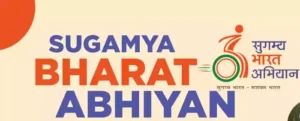
Why in News?
The Ministry of Social Justice and Empowerment recently launched a revamped version of the Sugamya Bharat App during the Purple Fest in Goa.
This move is part of the broader Accessible India Campaign (Sugamya Bharat Abhiyan), aiming to enhance accessibility for Persons with Disabilities (PwDs or Divyangjan) and the elderly across public infrastructure and services.
Objective of the App
To serve as a citizen-led, tech-enabled platform that:
Promotes inclusive accessibility
Enables public participation in reporting and improving infrastructure
Bridges governance and digital inclusion for marginalized groups
Key Features of the Sugamya Bharat App
| Feature | Description |
|---|---|
| Accessibility Mapping Function | Allows users to rate and locate public places (e.g., buildings, toilets, transport hubs) based on universal accessibility standards |
| Consolidated Scheme Directory | One-stop access to government schemes, scholarships, benefits, and jobs relevant to PwDs |
| Job & Education Listings | Curated lists of job opportunities and educational resources from both public and private sectors |
| Grievance Redressal Module | Enables users to report inaccessible infrastructure/services directly to authorities for resolution |
| Assistive Technology Compatibility | App is fully compatible with screen readers, voice commands, and other assistive features |
| Multilingual & AI Features | Available in 10 Indian languages with AI-powered chatbot for user guidance and support |
| Platform Compatibility | Optimized for both Android and iOS devices |
Context: Accessible India Campaign (Sugamya Bharat Abhiyan)
Launched in 2015, the campaign seeks to make public spaces, transport, and ICT (Information and Communication Technologies) accessible to PwDs
Covers three pillars:
Built Environment
Transportation
Information & Communication Services
Significance of the Revamped App
| Impact Area | Significance |
|---|---|
| Social Inclusion | Promotes dignity and independence for PwDs and elderly citizens |
| Citizen Engagement | Empowers users to participate in monitoring and accountability |
| Digital Governance | Leverages technology for responsive governance |
| Disability Rights | Advances commitments under the Rights of Persons with Disabilities Act, 2016 and India’s UNCRPD obligations |
Challenges Ahead
Ensuring timely redressal of grievances
Raising public awareness and training local authorities
Expanding accessibility in rural areas
Continuous data validation to prevent misuse or misinformation
Exam Connect – Possible Questions
Prelims
1. The Sugamya Bharat App is primarily aimed at:
A. Monitoring air quality in urban areas
B. Mapping Smart Cities development
C. Enhancing accessibility for persons with disabilities
D. Promoting e-governance in tribal districts
Answer: C. Enhancing accessibility for persons with disabilities
2. Which of the following is not a feature of the Sugamya Bharat App?
A. Accessibility mapping of public spaces
B. Grievance redressal mechanism
C. Real-time traffic updates
D. Directory of government schemes for PwDs
Answer: C. Real-time traffic updates
Mains
1. Discuss the role of digital tools like the Sugamya Bharat App in promoting inclusive governance for persons with disabilities. How do such initiatives strengthen the Accessible India Campaign? (150 words)
2. “Accessibility is the foundation of equality.” In the light of the Sugamya Bharat initiative, critically examine the role of government and civil society in making Indian infrastructure and services inclusive for all citizens. (250 words)
5. Bharat Taxi Initiative: A Cooperative-Driven Digital Mobility Model – Governance
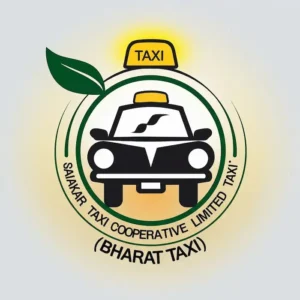
Why in News?
The National e-Governance Division (NeGD), in collaboration with Sahakar Taxi Cooperative Limited, has announced the launch of the Bharat Taxi Initiative, scheduled for December 2025.
This project is a first-of-its-kind cooperative-based national ride-hailing service, aiming to deliver inclusive, citizen-centric, and technology-enabled public transportation services under the Digital India framework.
What is the Bharat Taxi Initiative?
| Aspect | Description |
|---|---|
| Nature | Cooperative-led ride-hailing platform |
| Key Promoters | NeGD, Sahakar Taxi Cooperative Ltd., and financial/cooperative institutions |
| Launch Date | Expected in December 2025 |
| Model Type | Platform Cooperative – owned and managed by the driver-members themselves |
| Alignment With | Digital India, Atmanirbhar Bharat, and cooperative movement objectives |
Key Objectives
Promote economic empowerment of driver communities through cooperative ownership
Ensure digital inclusion and ease of access to public transport services
Reduce dependence on private cab aggregators and promote fairer revenue models
Deliver secure, citizen-focused services that respect data privacy and local governance
Key Features
| Component | Description |
|---|---|
| Platform Integration | Linked with DigiLocker, UMANG, API Setu for KYC and service access |
| Cybersecurity & Compliance | Aligned with national data protection norms and robust security protocols |
| Technical Architecture | Built on scalable, interoperable national platforms |
| UI/UX & Accessibility | Multilingual interface, inclusive design, and features accessible to PwDs and elderly |
| Advisory & Management | NeGD provides program governance, drawing from experience with projects like DigiLocker, Aadhaar, UMANG, etc. |
Why a Cooperative Model?
Ensures ownership and profit-sharing among taxi drivers
Promotes decentralized governance and local accountability
Reduces exploitation by centralized platforms
Strengthens the cooperative economy in line with government reforms in cooperative governance (e.g., formation of Ministry of Cooperation)
Expected Benefits
Improved livelihood security for drivers
Affordable and accessible transport options for users
Enhanced trust and transparency in ride-hailing services
Promotion of self-reliance and community ownership
Exam Connect – Possible Questions
Prelims
1. The Bharat Taxi Initiative, to be launched in 2025, is:
A. A government-owned electric vehicle manufacturing company
B. A ride-hailing service operated by a private aggregator
C. A cooperative-led ride-hailing platform integrating with national digital platforms
D. A platform for rural logistics developed under PMGSY
Answer: C. A cooperative-led ride-hailing platform integrating with national digital platforms
2. Which of the following digital platforms are expected to be integrated with the Bharat Taxi initiative?
1.DigiLocker
2.UMANG
3.API Setu
4.BHIM UPI
Select the correct answer using the code:
A. 1 and 2 only
B. 1, 2, and 3 only
C. 1, 3, and 4 only
D. 2, 3, and 4 only
Answer: B. 1, 2, and 3 only
Mains
1. What is the significance of the Bharat Taxi Initiative in promoting cooperative governance and digital inclusion in India? How does it differ from conventional ride-hailing platforms? (150 words)
2.Discuss the potential of platform cooperatives like the Bharat Taxi Initiative in reforming urban mobility and employment. What challenges may arise in implementing such citizen-centric digital governance models? (250 words)

